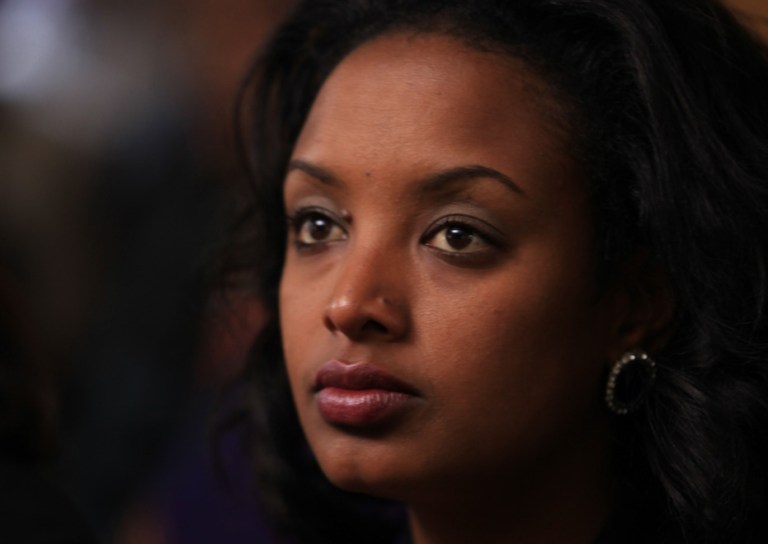In the opening scene of “Difret,” Zereseney Mehari’s first feature film, human rights lawyer Meaza Ashenafi (Meron Getnet) reassures one of her clients: “Don’t worry,” she says. “There are laws in this country. No one is above the law.” But Meaza’s faith in Ethiopia’s justice system comes to a head when she hears about Hirut Assefa (Tizita Hagere), a fourteen-year-old girl who faces a possible death sentence for shooting her rapist in self-defense. Based on a true story, “Difret” portrays the human stakes and political quandaries of Ethiopia’s movement toward gender equality.

As an Artist in Residence at the San Francisco Film Society, Mehari will join producer-writer Mehret Mandefro for a special screening of “Difret” (October 9) and an artist talk about filmmaking in Ethiopia (October 13). The movie, which was also produced by Angelina Jolie, has proven controversial in Addis Ababa, where it was banned on opening night. While “Difret” is more informative than aesthetically interesting, this fact-based drama serves as an important point of departure for conversation about the role of tradition and the exigency of progressive social change—topics which apply as much within the U.S. as abroad.
In a village three hours outside the Addis Ababa, Hirut is walking home from school when she is overtaken by a group of men on horseback. In accordance with telefa, or abduction for marriage, she is captured and raped by a 29-year-old man keen to be her husband. While locked in a barn, Hirut somehow gets hold of a rifle, shoots her assailant, and manages to escape—only to be imprisoned and prosecuted for murder by the region’s civil courts.
According to customary law, on the other hand, she is vulnerable to the whims of an all-male village counsel, which decides to exile her from her family and home. As Hirut’s representation, Meaza must negotiate this contested terrain between federal government and traditional local authorities.
But Mehari doesn’t do much to draw out these complications. Rather than explore why, exactly, rural residents might be resistant to cultural change handed down from the capital, he paints the provincial authorities as monolithic “bad guys.” Hirut, too, comes across as one-dimensional, partly because Hagere’s performance is often tepid and illegible. We don’t get much insight into her character beyond her victimhood.
The film also makes an odd habit of cutting out of crux moments in the plot, like when Hirut runs away from Meaza or when the pair come under gunfire driving away from the village. These moments of elision detract from what is otherwise the movie’s strong suit: Mehari’s make-no-apologies commitment to exposing the violence of gender-based discrimination.
That said, the movie is most interesting when it does more than elicit sympathy for Hirut’s plight and, in fact, reveals what is particular (and, yet, potentially explicable) about Ethiopia’s gender politics. Patriarchy—in Ethiopia, as elsewhere—connects to other systems of power. Political access, educational opportunities, and economic prospects remain the purview of a select few characters in the film, and this bundle of privileges tend to come together, depriving most women of a chance at social mobility.

In the same vein, the rural-urban divide functions as a deep chasm in the film, dividing the haves from the have-nots. Long panoramas of Ethiopia’s rolling countryside set off Hirut’s world from city life. In the capital, women have a chance to attend university, live alone, and have a career. When Hirut comes to stay with Meaza, however, she is intimidated by urban bustle and overwhelmed by the trappings of upper middle class lifestyle. Meaza’s apartment—with a refrigerator and telephone but no husband—represents freedom and security for Hirut, but she longs to go home to her family.
Likewise, everything that makes Meaza effective in Addis Ababa—her apparent professionalism and university background—threatens her rapport with the Assefa family. When she declines an offer to eat dinner with Hirut’s parents, for instance, Hirut’s father accuses her of being rude. In order to prove Hirut’s innocence, Meaza cannot transcend class, per se, but she must aspire to interact honestly and sensitively within its constraints.
In bringing issues like class and gender to the fore, “Difret” is too didactic, too much like a docudrama that foregoes complexity for pathetic appeal. It takes itself too seriously—but, then again, perhaps it should. Telefa is still part of present tense Ethiopia. Even in the U.S., girls risk sexual assault on their way home from school. “Difret” might feel far away and melodramatic, but its truth is close to home.
SFFS will host a screening of “Difret” at Embarcadero Center Cinema on October 9, 2014, 7pm. Writer-director Zeresenay Mehari and producer-writer Mehret Mandefro will speak about their filmmaking experience on October 13, 2014, 5:00-7:00pm at FilmHouse in San Francisco.
